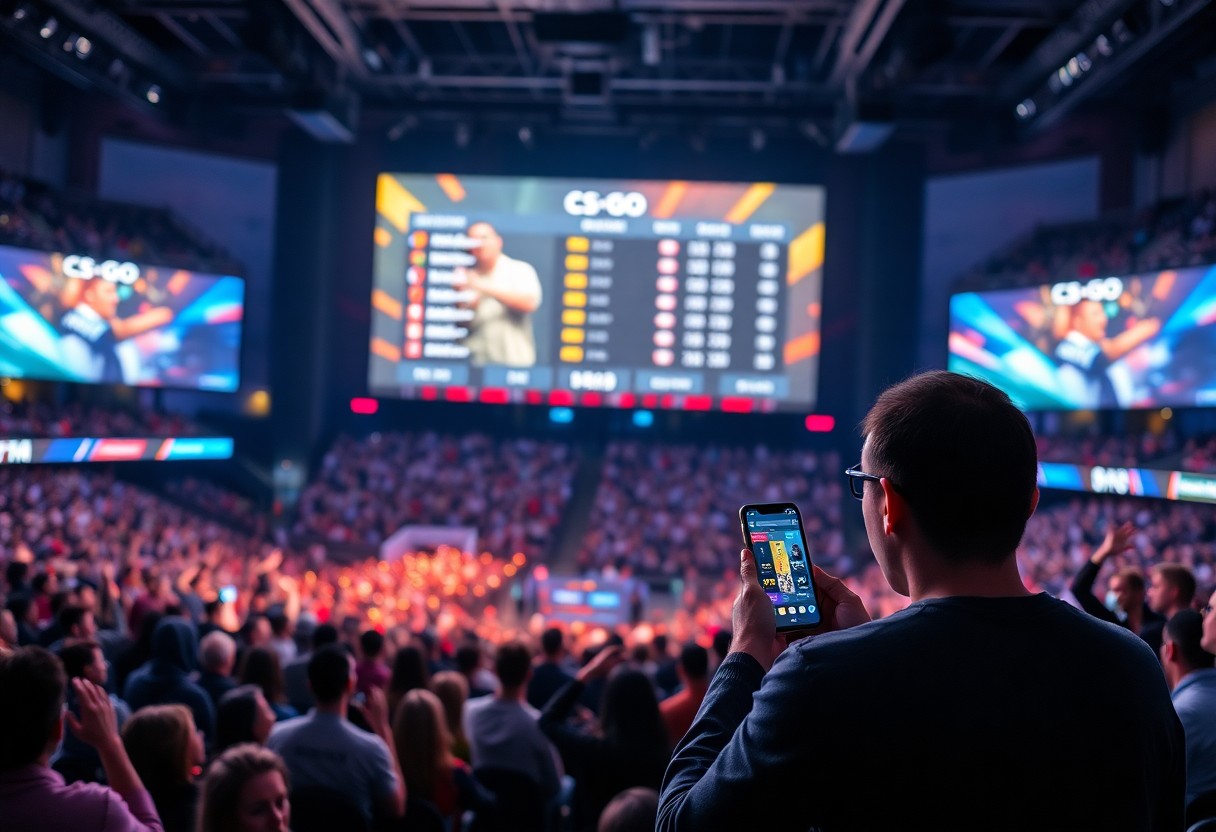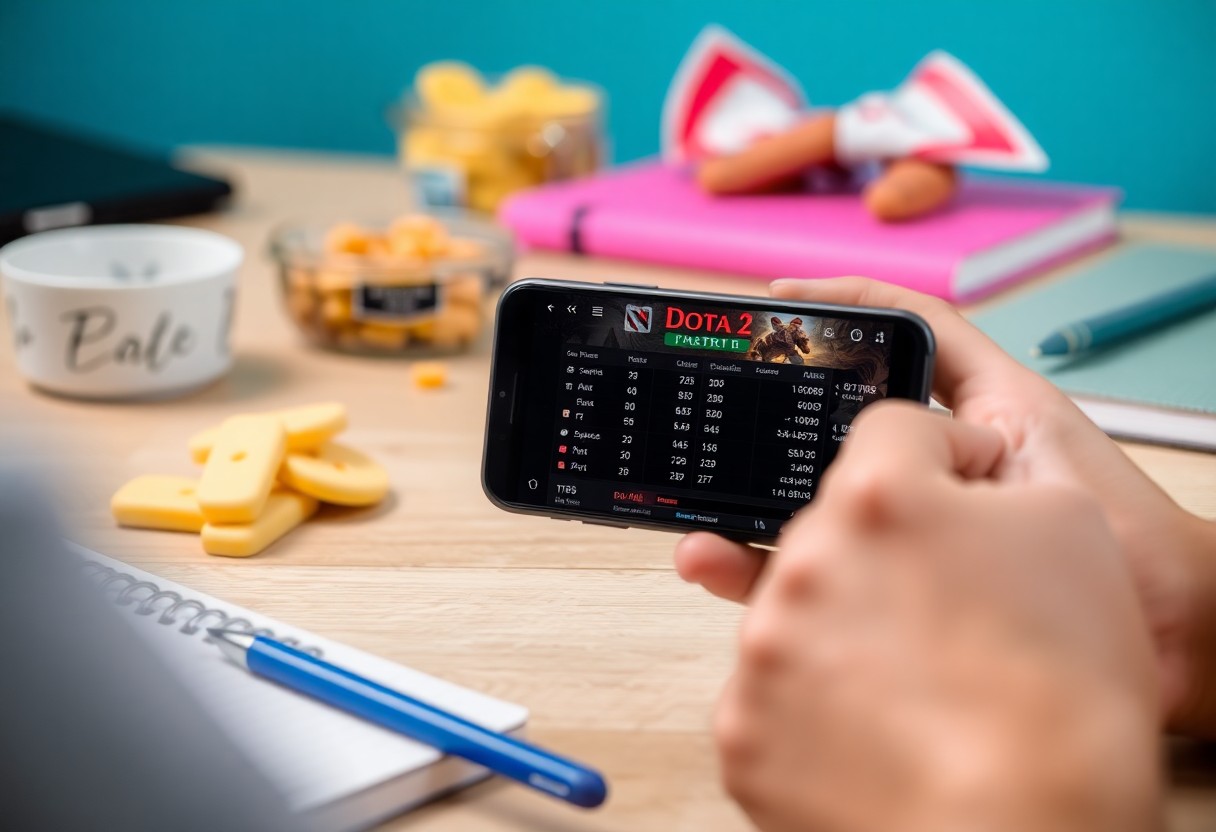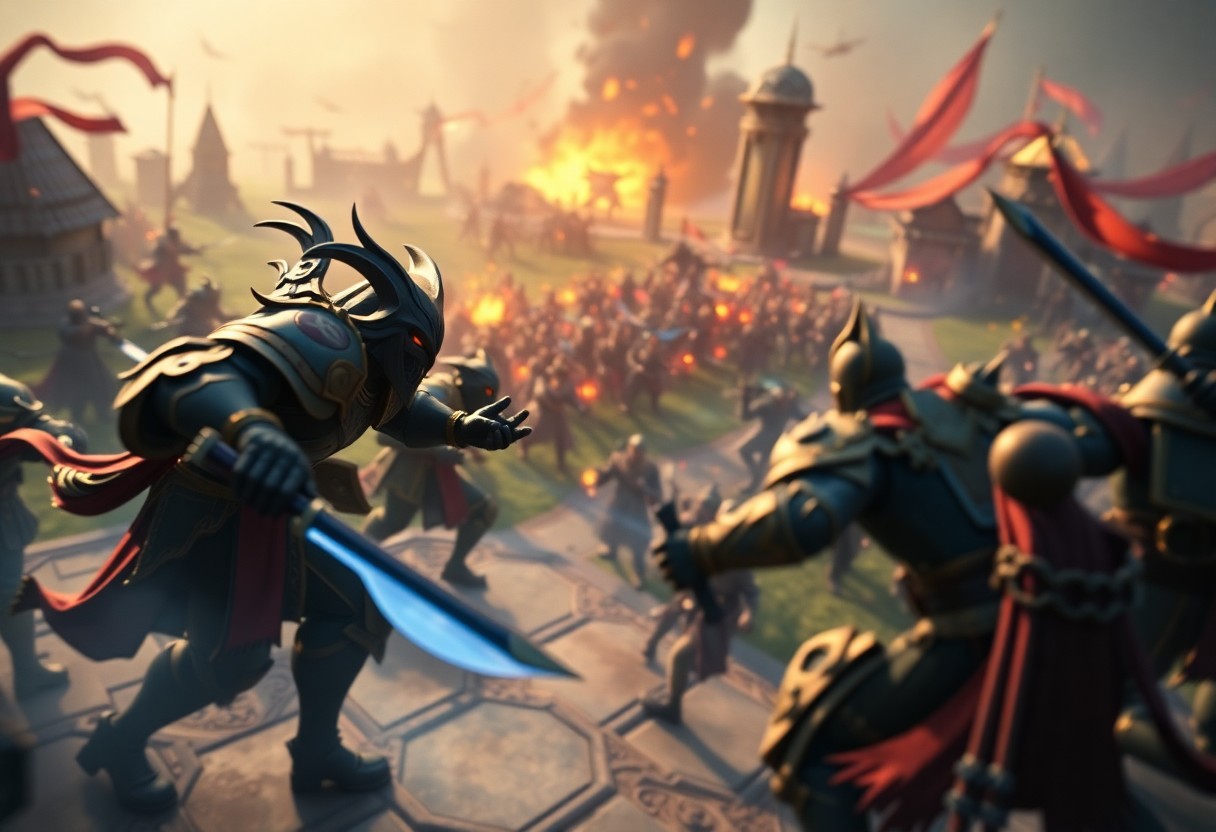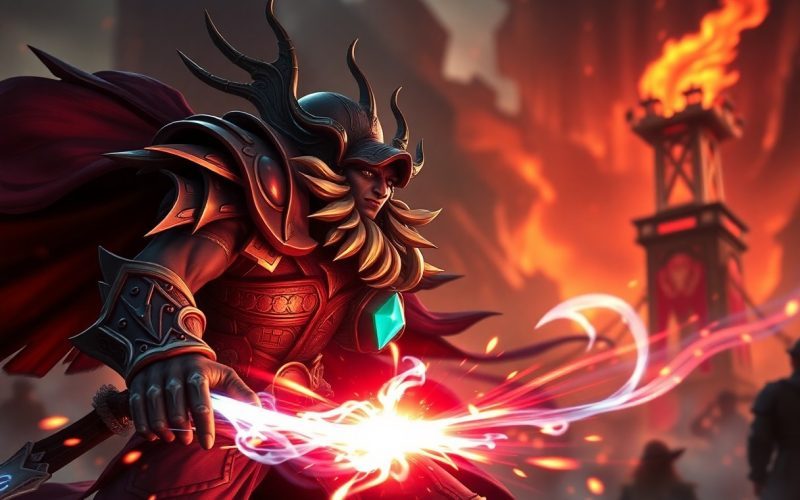With the tension running high in the late game of Dota 2, decision-making can make or break your team’s success. This guide will provide you with valuable tips on how to navigate those intense final moments, ensuring you make smart choices that lead to victory. From understanding team dynamics to knowing when to push or retreat, these insights will help you elevate your gameplay and keep your cool under pressure. Let’s examine the best strategies that can turn the tide in your favor!
Understanding Late-Game Dynamics
Before diving headfirst into the late-game phase of Dota 2, it’s crucial to grasp the broader dynamics at play. Late-game is not just about having the right items or a level advantage; it’s about understanding how various factors interact. Team compositions, map control, and hero match-ups become even more pronounced in this stage. Players must be aware of their team’s strengths and weaknesses, as well as those of the enemy, to make informed decisions that can influence the outcome of the game. Assessing objective priorities, maintaining vision, and coordinating team fights are all integral aspects to consider as the game progresses.
Identifying the Late-Game Phase
About recognizing when you’ve transitioned into the late-game phase can significantly enhance your decision-making skills. This phase typically begins when most heroes have reached their core items and levels, and team fights become more frequent. You’ll want to take note of key indicators, such as the number of buybacks available, the status of barracks, and the overall net worth distribution. These elements serve as important markers for both your team and the enemy’s capabilities, allowing for calculated strategies and plays as the game navigates this critical juncture.
Power Spikes and Timing Windows
After understanding the late-game dynamics, it’s vital to recognize the concept of power spikes and timing windows. Power spikes occur when heroes hit significant item or level milestones that enhance their effectiveness in fights. Keeping track of these timings ensures you can maximize your impact during engagements. For example, if you notice that the enemy team has just acquired a key item, it might be wise to avoid confrontation until you have secured your own power spike. These timings create opportunities and risks that can turn the tide of battle in your favor.
Due to the nature of power spikes, it’s crucial to constantly update your understanding of both teams’ itemization and abilities. Heroes with ultimate abilities, such as those that grant area control or deal massive damage, can shift the game’s momentum based on their cooldowns. By tracking these cycles, you can time your actions strategically—whether that means pulling back to farm or preparing to engage in a fight. Awareness of these dynamics gives you an edge and fosters better teamwork, improving the chances of achieving victory.
Resource Management
One of the key aspects of late-game decision-making in Dota 2 is effective resource management. When playing in the final stages of the game, every gold and experience point counts towards assuring victory, making the distribution of your farm a top priority. Players must recognize when to prioritize taking farm for themselves versus allowing their teammates the opportunity to secure necessary items. It’s all about striking a balance—understanding when to share farm with your supports while also ensuring that your carries have the resources they need to scale into the late game.
Farm Distribution Priority
Management of farm distribution should take into account the roles and item progression of each hero in your team composition. For instance, if you have a core hero who is critical for team fights and is still under-farmed, it’s often wise to prioritize their needs over other heroes. Meanwhile, supports can often play a role in creating space for the cores, helping to secure crucial farm as well as vision across the map. Evaluating which heroes are most relevant to your current game situation will help you decide where to focus efforts for maximum impact.
Buyback Management
About buybacks, they can often mean the difference between winning and losing a game during those tense late-game moments. You want to save your buybacks for when they can turn the tide of battle, or when you can secure crucial objectives, but this requires a good sense of timing and awareness of your current resources. Understand the circumstances under which you should use one—like after a team wipe or when defending against a crucial push by the enemy. Keeping a mental account of buyback cooldowns and managing your gold reserves accordingly will enable you to make informed decisions on when to use them.
This tactic also extends to your teammates; a well-timed buyback from a support to turn the tables in a team fight, even if they’re not the main carry, can sometimes secure victory. Always communicate with your team regarding buyback statuses, so everyone is on the same page. After all, coordination is crucial when you’re juggling important resources like gold, buybacks, and map pressure. Being proactive in your buyback management will not only help you survive longer in fights but also ensure your team’s cohesion and readiness to face the enemy’s onslaught.
Map Control and Vision
You can greatly enhance your late-game decision-making in Dota 2 by focusing on map control and vision. The ability to see your enemies and control key areas on the map can make or break your chances of victory. It’s necessary to have a well-coordinated vision strategy with your team, ensuring that you’re aware of enemy movements and key objectives at all times. This means placing wards in strategic locations that allow you to spot ganks, track enemy heroes, and take control of the lanes when necessary.
Strategic Ward Placement
The placement of wards can significantly influence the flow of the game. Position your wards in locations that provide vision over chokepoints, high-traffic areas, or around objectives like Roshan. It’s also beneficial to have a mix of Observer and Sentry Wards; while Observer Wards help you gather information, Sentry Wards can help you deny enemy vision and secure a safe area for farming or initiating fights. As the game progresses, reassess your ward placements based on the enemy’s movements and objectives that need to be controlled.
Securing Key Objectives
Any effective strategy hinges on the ability to secure key objectives such as towers, Roshan, and barracks. These objectives not only provide gold and map control but also serve as critical benchmarks in your team’s progress towards victory. Coordinate with your team to take down enemy towers and secure Roshan, particularly when you have vision and knowledge of enemy positioning. Timing is everything; strive to execute these objectives when your opponents are down or distracted, ensuring that your team can make the most of the opportunity.
At the late game stage, keeping an eye on the minimap is vital to maintaining map control and achieving your objectives. Be proactive in communicating with your team about potential openings to push or secure major objectives. Use your vision to set up ambushes around Roshan, and never underestimate the impact of taking the Aegis. The added confidence to engage in team fights can swing the momentum in your favor. Take care to balance aggression with caution, as a single mistake can lead to losing a key control point or even the game itself.
Team Fight Positioning
Many players underestimate the importance of positioning during team fights, but it can significantly impact the outcome. The ability to maintain a strategic position allows your team to maximize damage output while minimizing risks. Understanding how your heroes interact with one another—and where to place them on the battlefield—can give you the upper hand you need in these high-stakes situations. Proper positioning not only helps you survive longer but also enables your team to capitalize on enemy mistakes more effectively.
Initiator vs Counter-Initiator Roles
An important aspect of team fight positioning is recognizing the roles of initiators and counter-initiators. Initiators are the heroes that explore the enemy frontlines to start a fight, often using crowd control spells to disrupt the enemy’s formations. Counter-initiators, on the other hand, need to keep an eye on enemy movement and react promptly to turn the fight around. Identifying who is responsible for initiating and who must counter it allows your team to synchronize their actions, leading to more effective engagements.
Protecting High-Value Targets
Positioning your high-value targets—such as carries and supports—safely in fights is vital for prolonging damage output and maintaining overall team strength. Strategic placement behind frontliners, ensuring they are safe from enemy assassins and crowd control, can drastically improve your team’s odds of victory. This means not just relying on tanks and initiators but communicating effectively to build a protective barrier that allows your damage dealers to unleash their potential.
Hence, always assess the battlefield and adjust the positioning of your high-value targets according to the flow of the fight. As the skirmish unfolds, be ready to adapt; rotate your carries and supports as needed, allowing them to dish out damage while minimizing their exposure. Understanding this dynamics can make a significant difference in your team’s longevity during crucial engagements. Being proactive in your positioning not only protects crucial heroes but also sets the stage for a well-coordinated effort against your opponents.
Building and Base Management
Now, in the late-game phase of Dota 2, effective building and base management can significantly impact your team’s chances of success. Knowing how to invest your gold effectively in items and ensuring the safety of your structures is key to maintaining an advantage over your opponents. This is the time when every decision can tip the scales, so focus on maximizing your potential through strategic item purchases and maintaining control over your base areas.
Split-Push Decision Making
For successful split-pushing, it’s necessary to make well-timed decisions that allow you to apply pressure on multiple lanes while minimizing your risk. This strategy can be particularly effective when you have heroes that excel in mobility and pushing, as they can create chaos for the enemy and force them to react. Always be aware of the enemy’s positioning and their team’s capabilities before committing to a split-push, as it only takes one misstep for things to turn sour and lead to a quick team wipe.
Base Defense Priorities
Defense is about knowing what to prioritize in your base when the enemy pushes. Focus on protecting high-impact structures like the Ancient and barracks, as losing these can quickly spiral into a lost game. Take into account your remaining heroes and their ultimate abilities when deciding how to defend; sometimes it’s best to engage only when fully ready, allowing enemy heroes to overcommit and create opportunities for you to respond effectively.
At times, defending your base might require a delicate balance between engaging the enemy and preserving your resources. Consider using buybacks strategically, where appropriate, and plan your defense around your allies’ abilities and terrain advantages. Staying organized and clear about defense priorities can help your team effectively coordinate efforts and keep your base intact while waiting for the right moment to strike back against your opponents.
Game-Winning Decisions
Despite the intense pressures of late-game scenarios in Dota 2, the key to victory often lies in the decisions you make during this pivotal stage. Every move has the potential to shift the tide of battle; therefore, being strategic about your actions can lead to that long-awaited win. Focusing on your team’s strengths, predicting your opponent’s responses, and acting decisively when the moment calls for it is vital for claiming victory in these high-stakes situations.
Recognizing Win Conditions
To determine your path to victory, it’s important to identify your team’s win conditions early in the match. This can involve understanding which heroes on both sides excel in the late game, and how your team composition can capitalize on favorable matchups. For instance, if you have a late-game powerhouse like Anti-Mage or Faceless Void, your approach should be tailored to allow them to farm efficiently while keeping pressure on the opposing side. Being able to pinpoint what conditions might lead to a winning teamfight or successful push will guide your decision-making to optimize victory chances.
High-Ground Push Timing
Decisions about when to push high ground can make all the difference in securing a win. Ideally, you want to capitalize on a timing when the enemy team is at their weakest or when they have lost key heroes, giving you the best possible chance to breach their defenses. Coordinating with your team to ensure you have all necessary resources, like buybacks, waves pushed, and vision secured, will allow you to maximize the effectiveness of any high-ground push. Having a clear plan and understanding of the current game state will inform not just when to take the leap but also how to execute it successfully.
This moment is not just about evaluating enemy heroes but also assessing your own team’s readiness. Have your core heroes obtained vital items like Aegis or Bloodthorn? Are your supports in a position to disable enemy threats? Timing your push after winning a team fight, capitalizing on a pick-off, or following significant item completions can lead to a successful high-ground push. By focusing on these elements, your team can maximize the potential to secure that much-needed victory and leave a lasting impact on the game.
Final Words
Drawing together the key elements of late-game decision-making in Dota 2 will empower you to elevate your gameplay significantly. By focusing on effective communication with your team, understanding your hero’s strengths and weaknesses, and adapting your strategy based on the flow of the game, you’ll be better equipped to navigate those intense moments. Prioritizing vision, map control, and understanding itemization are crucial in maximizing your impact as the game progresses. What’s vital is fostering a positive mindset, allowing you to make logical decisions even under pressure.
Ultimately, enhancing your late-game decision-making is about practice and experience. By continuously analyzing your games and seeking feedback from fellow players, you’ll sharpen your instincts and improve your overall performance. Enjoy the journey, keep learning, and celebrate the progress you make. Happy gaming, and may your late-game decisions lead you to victory in Dota 2!





